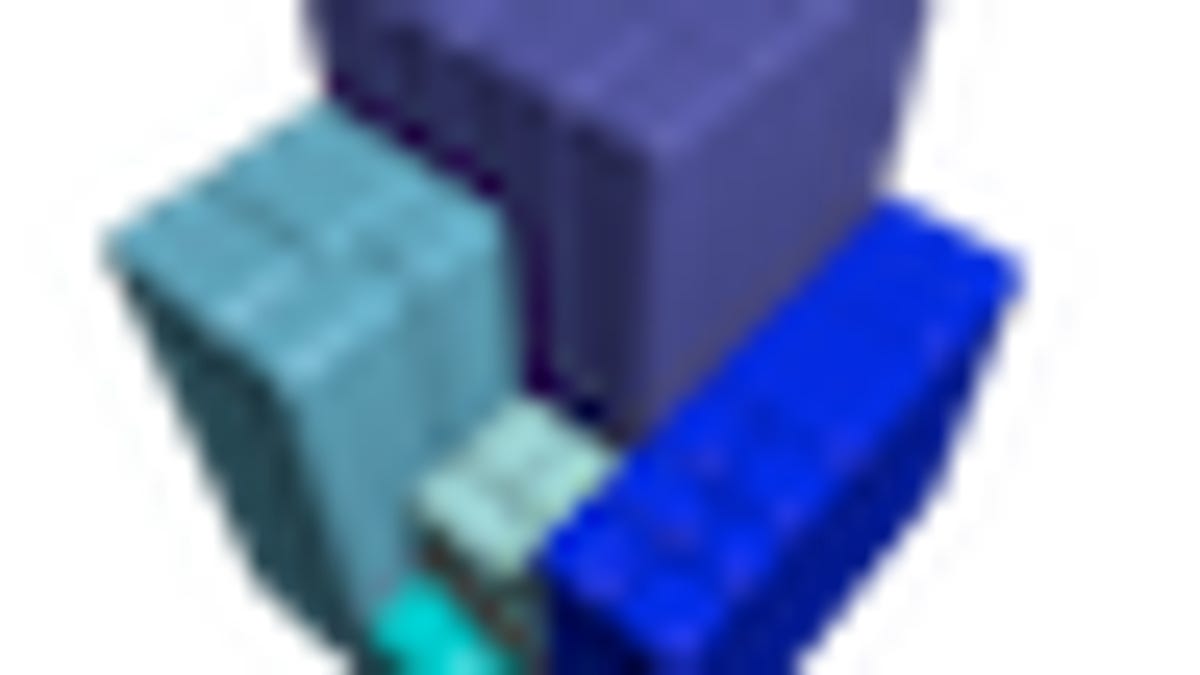Outline disk usage with Grand Perspective (review)
Grand Perspective is an open source project which offers an alternative way of representing file sizes on disk rather than through lists of numbers as is done in the Finder.

The last time I needed an exercise in frustration, I tried using the Finder to locate files that were taking up the most space on my disk. While the program is great for navigating the filesystem and locating items, when getting information on files or folders, or setting the Finder to automatically calculate file sizes, the "Calculating size..." process can sometimes pause for several minutes, and sometimes for tens of minutes. After the sizes are eventually calculated, the system will only list them and not really give you a good feel of which are using the most space. The utility Grand Perspective does a good job at tackling this limitation.
Grand Perspective is an open-source project (available at SourceForge and at CNET Downloads) that offers an alternative way of representing file sizes on disk rather than through lists of numbers as is done in the Finder. It does this by representing files visually as groups of rectangles with sizes directly proportional to the respective files' sizes on disk.
The program starts at a specified root folder, and shows all files from that folder in a rectangular grid, grouped together and colored by common folder structures so they can be easily followed. This method of displaying the hard drive's contents is rather intuitive, and can easily let you locate the files and folders that are using up most of your drive space.
When the program launches, initially there are no windows displayed. You will need to choose "Scan Folder" from the "File" menu (also available with the Command-S hot key) and selecting a target folder. The program will then scan all files and subfolders, and display them as rectangles in a grid pattern. Larger files are shown by larger rectangles, and files in the same folder are grouped together in the same color.
Once the scan is complete, you can select individual files, and then use the toolbar to rescan, reveal the file, open the file, or immediately delete the file. To avoid errors, the option for deleting files is disabled until you specifically enable it in the Grand Perspective preferences. Beyond some customization there is not much more to the program than that. You can save scans, and the image output from scans, as well as load previously saved scans.
By default, the program will scan all accessible files, so you will be limited to scanning the files for which you have read access. This means that files not available to you without authenticating (such as other users' home directories) will not be scanned. Unfortunately there is no way to authenticate an administrative account to enable read access for scanning all files, but hopefully that feature will make its way to the program in a future release.
To limit the files found, the program supports filters, which are available in the "Grand Perspective" menu. In this section of the program you can set up test routines that will be applied to each file scanned, and used to include or omit it from the scan if it matches the conditions of the test. To run a filtered scan, choose "Filtered Scan" from the "File" menu instead of the standard "Scan Folder" option. I have found this to work quite well, though there are a few interface bugs with the filter setup window (sometimes buttons will become inactive).
The filtering options are very extensive, and you can customize your own test conditions and filter setups to match practically any file type and attribute in the system. By default the program uses a built-in filter that excludes hard linked files, but this can be changed in the preferences.
The program is quick at scanning, and instantaneously calculates file sizes (unlike the Finder's exceptionally slow file size calculation process). While scanning is fast, the overall time taken for building the visual grid will depend on the number of files included in the scan (not file size), so if you scan the root file system it may take a minute or two instead of instantly showing the results.
In the most recent release, version 1.3.1, the program's main new feature is drop-scanning that lets you drag any folder to the Grand Perspective icon (either in the Dock or Finder), and have it immediately scan and display the visual size representation of that folder's contents.
While this feature is convenient, there is still one useful aspect that is lacking--the capability to batch-scan folders. If you drag several selected folders to the Grand Perspective icon, the program will only scan the first one alphabetically. If you need to quickly size up multiple folders, you will have to sequentially drag them to the program. Despite this, the program is still just as useful as it has always been.
There are a few other file managing utilities out there, some of which also provide graphical drive representations. DaisyDisk and WhatSize both offer graphical file size representations, but are shareware and provide limited functions until you purchase a license.
Overall, Grand Perspective does not pretend to be anything it is not. It provides one function and does that function quite well, which makes it a convenient utility to have in any troubleshooting arsenal. The best part is that it's free!
Questions? Comments? Post them below or e-mail us!
Be sure to check us out on Twitter and the CNET Mac forums.

